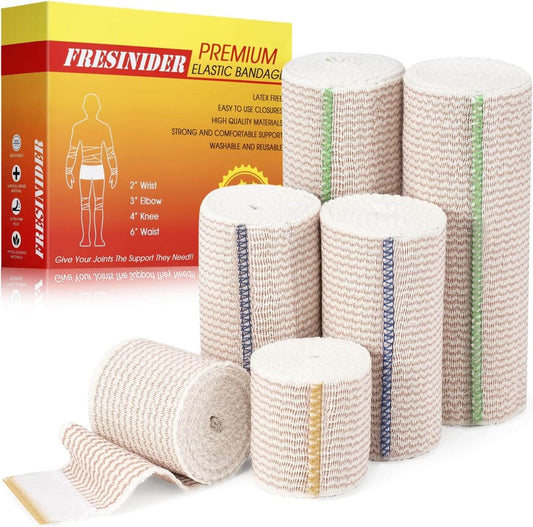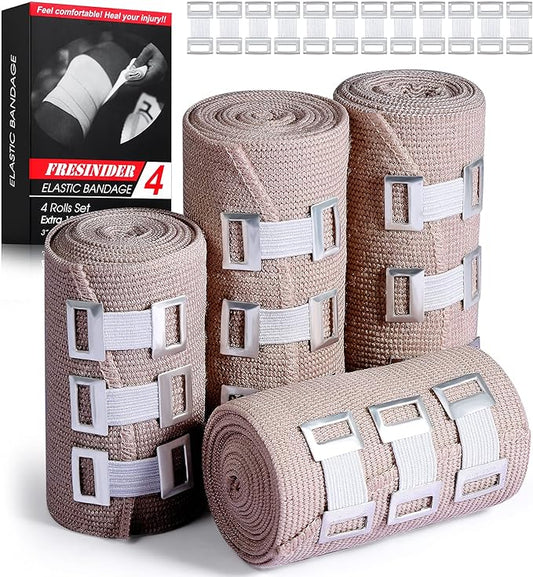Wound care is a critical aspect of recovery, whether the wound comes from surgery, diabetes, or a minor accident. One of the most important decisions in wound management is choosing the right dressing. The right dressing can support faster healing, provide comfort, and protect the wound from infection, while the wrong choice can delay healing and increase complications.
This guide explains the most common types of wound dressings, their benefits, limitations, and typical use cases, so that patients and caregivers can make informed decisions.
Why Choosing the Right Dressing Matters
Every wound is unique. A dressing that works well for a surgical incision may not be suitable for a heavily exudating pressure ulcer. The role of a dressing is not only to cover the wound but also to:
- Maintain a moist wound environment (shown to support faster healing than dry dressings)
- Protect from external contaminants such as dirt and bacteria
- Absorb excess exudate and prevent maceration of surrounding skin
- Provide comfort and minimize pain during removal
- Support fragile skin and prevent trauma
Understanding Wound Healing and the Role of Dressings
The wound healing process occurs in several phases:
- Hemostasis – blood clotting and sealing the wound
- Inflammation – immune response to prevent infection
- Proliferation – tissue growth and granulation
- Remodeling – strengthening and scar formation

A good dressing helps optimize conditions during these phases. Ideally, a dressing should be:
- Moisture-retentive but breathable
- Protective but gentle on the skin
- Absorbent enough to handle exudate
- Easy to apply and remove
Common Types of Wound Dressings
Gauze and Traditional Dressings
Description: Cotton gauze pads or rolls, often used with tape.
Pros: Widely available, inexpensive, useful for temporary coverage.
Cons: Stick to the wound bed, painful to remove, require frequent changes, cannot maintain moist healing.
Best for: Minor cuts, first-aid situations, temporary use.
Non-Adherent Contact Layers
Description: Thin layers that prevent sticking to the wound bed (e.g., silicone-coated mesh).
Pros: Protect fragile tissue, minimize trauma on removal.
Cons: Provide little absorption, must be used with secondary dressings.
Best for: Skin tears, grafts, and wounds where protecting granulation tissue is key.
Transparent Film Dressings
Description: Thin, adhesive, semi-permeable films.
Pros: Waterproof, allow oxygen exchange, enable visual monitoring.
Cons: Not absorbent, unsuitable for heavily exudating wounds.
Best for: Superficial wounds, surgical incisions, IV sites.
Hydrogel Dressings
Description: Water-based gels in sheets or amorphous form.
Pros: Add moisture to dry or necrotic wounds, soften eschar.
Cons: Poor absorption, need secondary dressings, can macerate skin.
Best for: Dry wounds, burns, wounds with necrotic tissue.
Alginate Dressings
Description: Made from seaweed-derived fibers.
Pros: Highly absorbent, form gel on contact with exudate, hemostatic properties.
Cons: Not suitable for dry wounds, require secondary dressing.
Best for: Moderate to heavily exudating wounds.
Hydrocolloid Dressings
Description: Contain gel-forming agents (e.g., pectin, gelatin).
Pros: Provide moist environment, protect wound, comfortable to wear.
Cons: Not suitable for infected wounds or heavy exudate.
Best for: Pressure ulcers, blisters, superficial burns, acne.
Want a deeper dive into how this dressing works and when to use it? Read our in-depth guide here. Learn more.
Foam Dressings (Including Silicone Foam)
Description: Soft, absorbent foam pads, often with silicone contact layers and adhesive borders.
Pros: Highly absorbent, provide cushioning, painless removal, extended wear time (3–7 days).
Cons: More expensive than gauze, bulky for small wounds.
Best for: Surgical wounds, diabetic foot ulcers, pressure ulcers, abrasions.
Composite / Multi-Layer Dressings
Description: Combine multiple layers (foam + film + absorbent core).
Pros: Multi-functional, versatile.
Cons: More expensive, sometimes bulky.
Best for: Complex wounds with variable needs.
Antimicrobial and Silver-Infused Dressings
Description: Dressings impregnated with silver, iodine, or honey.
Pros: Reduce bacterial load, helpful in infected or high-risk wounds.
Cons: May cause irritation, not for long-term use.
Best for: Wounds with infection risk (used under clinical supervision).
Smart and Bioactive Dressings (Next-Gen)
Description: Include bioengineered skin substitutes, nanofiber dressings, and sensor-based materials.
Pros: Advanced healing properties, deliver medications, adapt to wound environment.
Cons: Expensive, still in research or limited clinical use.
Best for: Complex or chronic wounds, mostly in advanced care settings.
Comparison of Wound Dressing Types
| Dressing Type | Absorption | Comfort | Wear Time | Best For | Limitations |
|---|---|---|---|---|---|
| Gauze | Low | Low | Few hours | Temporary coverage | Painful removal, no moisture |
| Transparent Film | None | High | Up to 7 days | Superficial wounds | Not for exudate |
| Hydrogel | Low | Moderate | 1–3 days | Dry/necrotic wounds | Risk of maceration |
| Alginate | High | Moderate | 1–3 days | Heavy exudate wounds | Needs secondary dressing |
| Hydrocolloid | Moderate | High | 2–5 days | Pressure ulcers, blisters | Not for infected wounds |
| Foam (Silicone Foam) | High | High | 3–7 days | Surgical wounds, ulcers | Cost, bulkier |
| Composite | Variable | Moderate | 2–5 days | Complex wounds | Cost, bulk |
| Antimicrobial | Variable | Moderate | 1–5 days | Infected wounds | Skin irritation possible |
| Smart/Bioactive | Variable | High | Variable | Advanced wound care | Expensive, limited access |
How to Choose the Right Dressing for Your Wound
When selecting a dressing, consider:
- Exudate level: Light, moderate, or heavy
- Wound depth: Superficial or deep
- Location: Joint, foot, sacral area, etc.
- Infection risk: Presence of bacteria or necrotic tissue
- Patient factors: Age, diabetes, fragile skin
General tips:
- Transparent film dressing → best for superficial wounds with minimal exudate
- Hydrocolloid dressing → best for low to moderate exudate, pressure ulcers, blisters
- Foam (silicone foam) dressing → best for moderate to heavy exudate, surgical or chronic wounds
- Always consult healthcare professionals for infected or chronic wounds.
Frequently Asked Questions (FAQ)
Q1: What’s the difference between hydrocolloid and foam dressings?
Hydrocolloids are thin, semi-occlusive dressings for light to moderate exudate, while foam dressings are thicker, more absorbent, and suitable for moderate to heavy exudate.
Q2: Can I shower with a film dressing?
Yes, transparent film dressings are waterproof, but they are not suitable for wounds with heavy drainage.
Q3: How often should I change a hydrocolloid dressing?
Every 2–5 days, or sooner if leakage occurs.
Q4: Which dressing is best for diabetic foot ulcers?
Foam dressings (especially silicone foam) are often recommended for their absorbency and gentle removal. However, medical guidance is essential.
Conclusion
There is no single “best” wound dressing. Each type has unique strengths and limitations. Transparent film dressings are excellent for superficial wounds, hydrocolloids are useful for light to moderate exudate, and foam dressings are ideal for moderate to heavy exudate wounds.
By understanding the different dressing types, patients and caregivers can make better decisions and improve healing outcomes.





